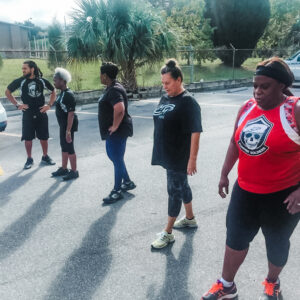Sheri knew something was wrong.
She’d always been active, particularly enjoying daily walks. But lately her balance and posture were off. Her knees jerked. Her hands trembled.
So, when her doctor diagnosed her with Parkinson’s disease last year, it was almost a relief.
“At least now I knew,” says Sheri, 73.
She started an exercise regimen designed to help relieve some of the symptoms of Parkinson’s. It started working quickly. Sheri felt less pain, and her balance and posture improved. And she has stayed committed to staying active.
“Movement is the most important thing,” she says, noting her support group – adult children, “prayer partners,” and friends who stay in touch with her.
More Than 10 Million Cases Globally
April is Parkinson’s Disease Awareness Month and a good time to discuss how exercise can lessen its symptoms and improve quality of life.
Parkinson’s is a neurodegenerative disorder that affects the brain, and symptoms can include tremors, problems with walking and balance, and limb rigidity.
More than 10 million people worldwide have it, according to the Parkinson’s Foundation. In the US alone, more than 60,000 people are diagnosed each year, almost all of them after age 50.
The cause is unknown. There is no cure. Treatments include medication and surgery, says the Parkinson’s Foundation. It is not fatal itself. But complications are the 14th leading cause of death in the US, says the Centers for Disease Control.
Exercise Is Essential
“Any kind of exercise you do consistently will help improve your Parkinson’s symptoms and overall health,” the Parkinson’s Foundation says. That’s because exercise might slow the progression of the disease. It also:
- Improves muscles, bones, flexibility and balance
- Helps with lung capacity
- Keeps you socially active
- Boosts confidence and mood
Effective Exercise Types for Parkinson’s
Boxing is an increasingly common activity for Parkinson’s patients. “Non-contact boxing-inspired classes can reverse, reduce and even delay the symptoms,” says Rock Steady Boxing.
“Boxers condition for optimal agility, speed, muscular endurance, accuracy, balance, hand-eye coordination, footwork and overall strength to defend against and overcome opponents,” Rock Steady says. “Parkinson’s causes a loss in many of the same elements that boxers condition to improve.”
Building muscle at any age becomes especially important for those with Parkinson’s, as strength training can help counteract the muscle rigidity and weakness that often accompany the condition.
Also, the Parkinson’s Foundation recommends activities such as:
- Golf
- Walking
- Bicycling
- Dancing, since learning steps while moving can boost cognition, like boxing exercises
- Swimming
- Tai chi and yoga to help with balance
Take Control with Specialized Fitness Training
Parkinson’s disease presents unique challenges, but as Sheri’s story demonstrates, regular exercise can make a meaningful difference in managing symptoms and improving quality of life. At MMFitness, we understand the specific needs of individuals facing neurological conditions like Parkinson’s.
Our trainers are experienced in developing personalized exercise programs that focus on the key areas that benefit Parkinson’s patients most: balance, coordination, strength, and mobility. We can incorporate elements of boxing training, balance exercises, and strength conditioning that research has shown to be effective for Parkinson’s symptoms.
In our supportive small group environment, you’ll find both the expert guidance and the community support that helps maintain motivation and consistency—two critical factors for success.
Don’t let Parkinson’s define your capabilities or limit your independence. Contact MMFitness today at (813)618-7882 to learn about our specialized training approaches, or visit us at 8602 Temple Terrace Hwy D-36, Tampa, FL 33637.
Let us help you or your loved one fight back against Parkinson’s with the power of purposeful movement.
Training Hours:
Mondays – Fridays
Saturday: 9am




